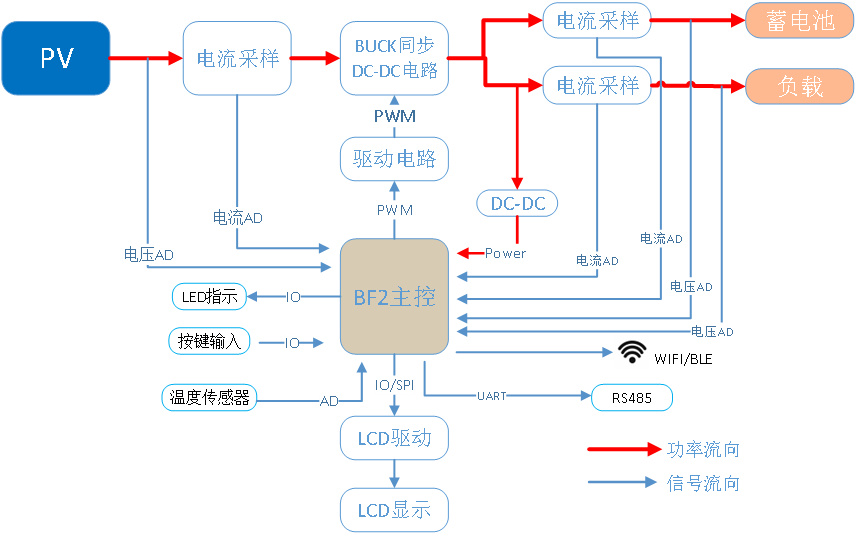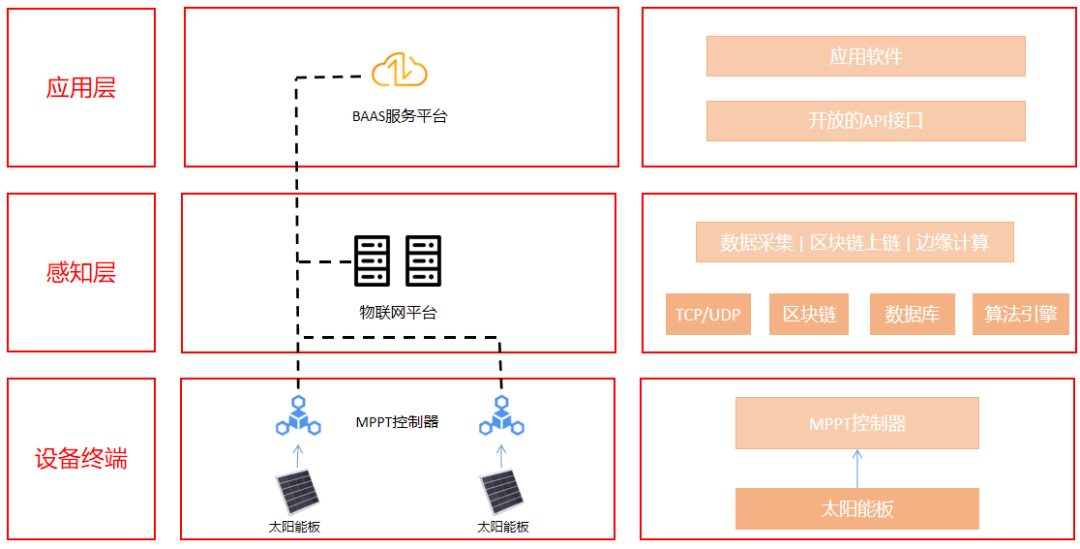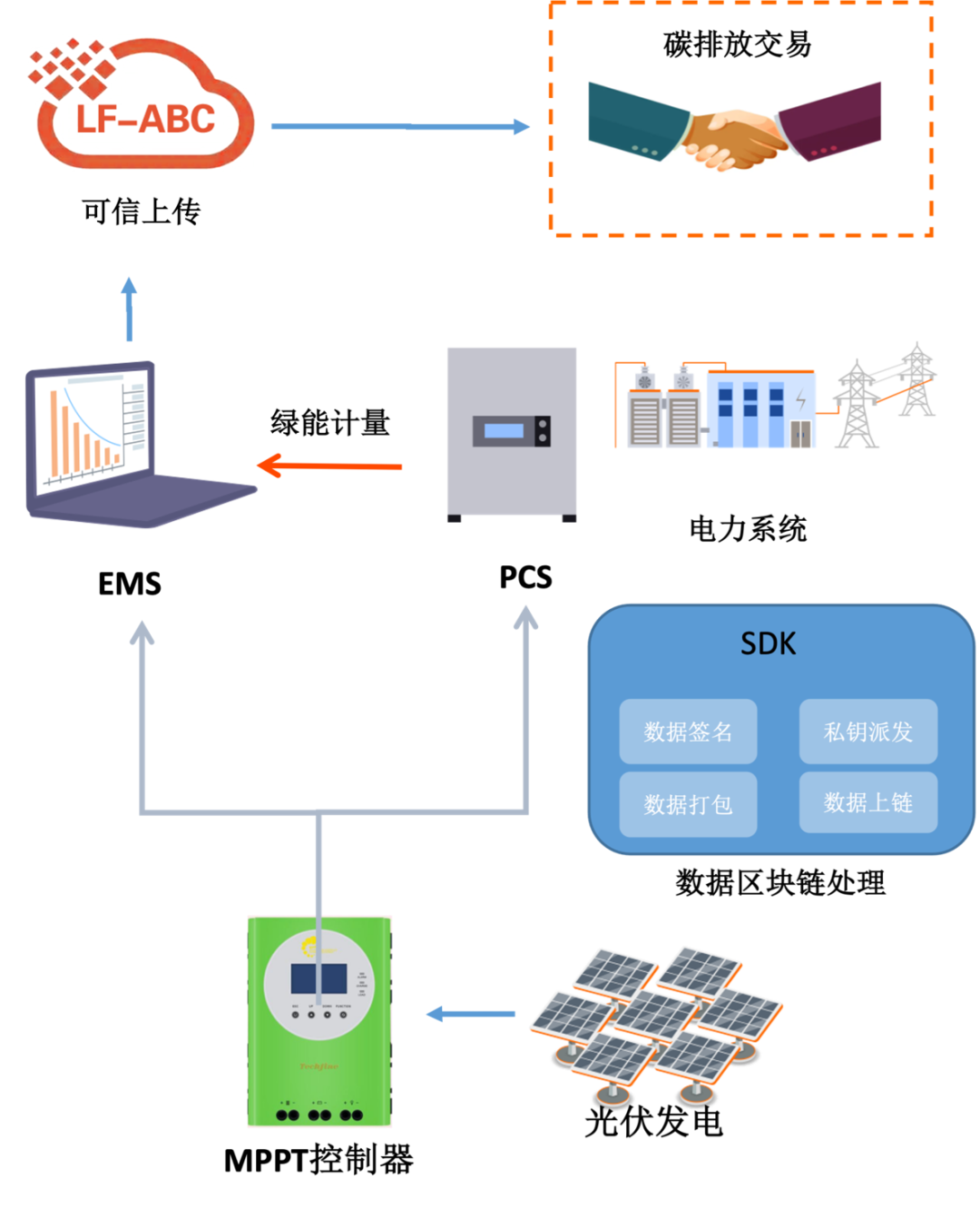Products|LeapFive Technology Launches BF2-MPPT
Solar Controller for Photovoltaic Power Generation System
China’s photovoltaic industry started around 2005 driven by the demand of European market. Over the past ten years, it has achieved leapfrog development, established a complete market environment, and supported environment. It has become one of a few in China, can be synchronized to participate in international competition and reach the international leading level of strategic emerging industries, and become a significant industry of China’s industrial economic development and an important engine to promote my country’s energy transformation. During the “14th Five-Year Plan” period, with the diversification of the application market and the development of market-oriented transactions in electricity and “sales of electricity through the wall”, the newly installed photovoltaic capacity will increase steadily. The newly installed photovoltaic power generation capacity in China is 48.2 million kilowatts. In 2021, China’s newly installed photovoltaic capacity will be reaching to 54.88GW, a year-on-year increase of 14%.
Photovoltaic power generation is a technology that directly converts light energy into electrical energy by using the photovoltaic effect at the semiconductor interface. It is mainly composed of three parts: solar panels (components), controllers and inverters. Practical utilization is limited due to the ever-changing intensity of sunlight. To achieve the maximum power output of the photovoltaic inverter and meet the demand for maximum output power to improve charging efficiency, a controller is required to precisely control the power.
In 2021, the global MPPT controller market size is about 1.07 billion CNY. It is estimated that from 2021 to 2026, the global MPPT controller market will continue to grow at a compound annual growth rate of about 5.5%. By 2026, the market size will reach about 1.40 billion CNY. In many countries around the world, photovoltaic power generation is an important alternative to traditional thermal power generation. Many countries have issued policies to promote the continuous increase of its installed capacity. The global photovoltaic industry is still in the process of rapid development. To improve the power generation of photovoltaic system, MPPT controller market has a bright future.
At present, the traditional PWM controller is widely used in the market. Its structure is relatively simple, and it cannot realize real-time tracking, and the improvement of charging efficiency is small. However, the MPPT controller can track the maximum power point of the solar panel in real time, as well as the maximum efficiency can directly increase the power generation of the photovoltaic system; therefore, it will become the development direction of solar controllers.
What is MPPT?
Maximum power point tracking (MPPT) is a technique used with variable power sources to maximize energy extraction as conditions vary. The technique is commonly used with photovoltaic solar systems. PV solar systems have varying relationships to inverter systems, external grids, battery banks, and other electrical loads. The central problem addressed by MPPT is that the efficiency of power transfer from the solar cell depends on the amount of available sunlight, shading, solar panel temperature and the load’s electrical characteristics. As these conditions vary, the load characteristic that gives the highest power transfer changes. The system is optimized when the load characteristic changes to keep power transfer at highest efficiency. This optimal load characteristic is called the maximum power point (MPP). MPPT is the process of adjusting the load characteristic as the conditions change. Circuits can be designed to present optimal loads to the photovoltaic cells and then convert the voltage, current, or frequency to suit other devices or systems.
For example, if MPPT has not started tracking, the output voltage of the module is 500V at this time, then after MPPT starts tracking, it starts to adjust the resistance on the circuit structure through the internal circuit structure to change the output voltage of the module, and at the same time change the output current until the output power reaches the maximum (assuming 550V is the maximum), it will continue to track after that, so that means the output power of the module will be higher than 500V at 550V output voltage with the same solar radiation, that is the role of MPPT.
LeapFive Product – BF2-MPPT Solar Controller
LeapFive Technology focuses on electricity and green energy, empowering double carbon, fully integrates the RISC-V open-source processor architecture, ABC’s data security system, and AIoT’s computing power technology, based on those technologies LeapFive developed a new generation of BF2-MPPT solar controller. Based on the advantages of the incremental conductance method, this solution improves the hardware design, optimizes the algorithm efficiency, and relies on the advantages of the BF2 chip computing power to change the hardware requirements in the implementation of the traditional incremental conductance method, especially the relatively high requirements for the accuracy of the sensor. Due to the disadvantage of high system cost, a more accurate incremental conductance algorithm is realized based on low cost.
Application
The BF2-MPPT solar controller can be mainly used in photovoltaic power generation work scenes such as solar power generation system, solar streetlamp, solar charging pile, solar billboard, solar smart home, solar traffic warning light, etc.
The product manager of LeapFive Technology revealed that the core device BF2 used in this solution is a 32-bit RISC-V architecture SoC (system-on-chip), integrated with dual-mode Wi-Fi/BLE, with its own security encryption function, which can It is applied to many fields such as smart energy, smart logistics, smart city, smart factor, etc.
Features
- MCU control + Wi-Fi integrated chip.
- Remote control via APP or applet.
- IoT real-time monitoring, historical data monitoring, guide users to perform reasonable operations according to real-time conditions based on cloud intelligent algorithms.
- High chip computing power, able to support complex incremental conductance algorithm, more accurate and stable.
- The chip can support block chain technology and ensure the reliability of photovoltaic work data by uploading end-side data to the chain.

Functional Overview
The BF2-based MPPT charging control application can achieve higher peak power tracking and keep the photovoltaic stable and long-term working near the maximum power point. Through a accurate and efficient incremental conductance control algorithm, when the light and temperature changes, the output voltage of the solar cell array can smoothly follow the environmental changes, so that the solar photovoltaic array is finally stable at a point near the maximum power point, the voltage fluctuation is smaller than the disturbance observation method, the control is precise, and the response speed is fast.
The product manager of LeapFive Technology said that this solution can realize IoT functions at the same time, connect to the cloud through Wi-Fi, and perform remote inspection and control through the app. At the same time, it can guide users to perform reasonable operations according to the real-time situation according to the cloud intelligent algorithm. The reliability and security of photovoltaic work data are guaranteed through blockchain technology, providing data protection for photovoltaic power supply scenarios.
Advantages
- Low cost
Disadvantages of current products on the market: high cost, repetitive display and APP control operations, which will increase the cost. The MCU needs to be connected with BLE/Wi-Fi, which will increase the cost.
BF2-MPPT low-cost advantage: direct online remote control through App or applet, which can save the cost of LCD screen and buttons. BF2 can carry MCU functions, and comes with Wi-Fi/BLE, which can reduce the cost by about 30%-40%.

- IoT function
- IoT function via WiFi/BLE.
- The running status of the equipment can be remotely monitored and controlled remotely through the App or applet.
- It can accurately record and collect the power of photovoltaic cells, store historical data, and facilitate problem tracing.
- It can guide users to perform reasonable operations according to the real-time situation according to the cloud intelligent algorithm.
- Guarantee the reliability and security of photovoltaic work data through blockchain technology.
- Support other IoT access, open API interface.

- Blockchain green energy measurement
- In the process of photovoltaic power generation, collect statistics on photovoltaic power generation energy storage data, and assist EMS in green energy measurement.
- During the working process, it can rely on the high computing power of the BF2 chip to encrypt the collected photovoltaic equipment data in various ways, and at the same time realize the end-to-end data chain up to the blockchain.
- Ensure the traceability of the data during the inspection and ensure the authenticity of the data, so that it is convenient to find the cause in time when there is a problem in the measurement process and ensure stable power generation.

